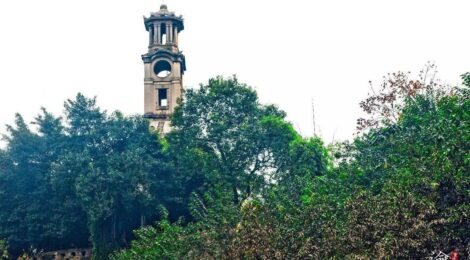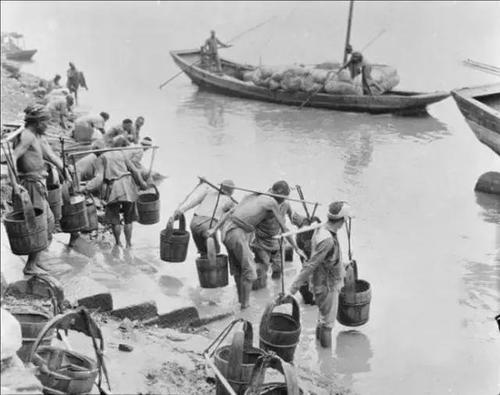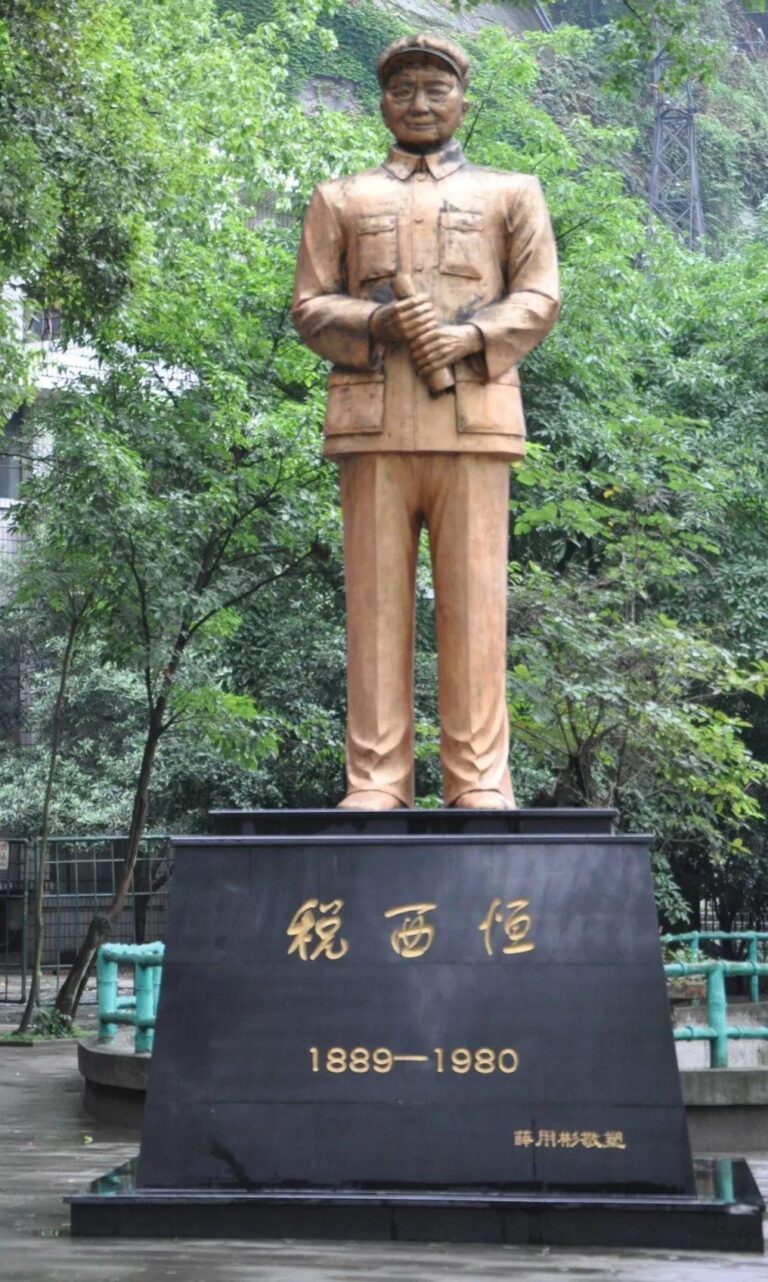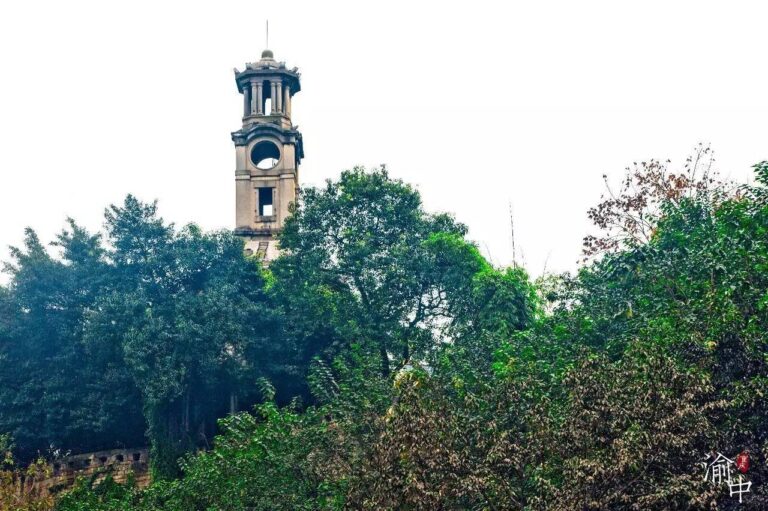
Daqiangba Waterworks and Water Tower
As we stepped into zero-cash society, paper currency was used less and less, but a five-yuan note issued by “the Farmers Bank of China” in 1937 has been kept and treasured in Chongqing Three Gorges Museum. It is not only unique in shape, but also of memorial significance in the history of Chongqing: a well-shaped tower was printed on this very note. Today, we are going to explore the story behind this note.

The five-yuan note
The tower printed on the note, named “Daqiangba Water Tower,” is a three-story water tower built of brick and stone that combines western architectural features with classical Chinese elements. It’s also a part of the first waterworks in Chongqing. Before the construction of water supply works, Chongqing people who lived on steep hills had to go down to the Yangtze River or Jialing River to get water, or buy water from others. Therefore, the special profession of “water bearer” was born. According to historical records, in the early Republic of China, there were more than 20,000 water bearers in Chongqing.

The water bearer
In addition to daily drinking, water has a bigger function for old Chongqing — putting out fires. The houses in the old Chongqing city were mostly built leaning the mountains by woods and bamboos. If there was a fire breakout, it’s easy to spread to large areas. Therefore, the water carriers must be regularly asked to carry water to fill up the reservoirs and water tanks in the city. In 1938, a 3-meter-long drawing called “Bashu People Drawing Water” painted by the great artist Xu Beihong vividly shows the hardship of water bearers by depicting three scenes of drawing water people in the mountain city drawing water from the river: getting water, making way for the road and moving forward.

Painting by Xu Beihong “Ba People Drawing Water”
In 1926, Pan Wenhua, director of Chongqing Commercial Port Supervision Office, proposed to build a waterworks to meet the needs of the public for daily water use and fire prevention. Manager of the project——chief engineer Shui Xiheng decided to make Daxigou by Jialing River the water taking point and located the waterworks in Daqiang Dam. In the mountain city, “dam” refers to a relatively flat land, which is rare in Chongqing. What’s more, this dam is of commanding height in the old Yuzhong District, giving it the geographic advantage for water supply. In Qing dynasty, the dam was used for shooting practice for army soldiers and got its name “dǎ qiāng bà”(literally means shooting dam).For this reason, the water supply plant is also called Daqiangba Waterworks and the water tower Daqiangba Water Tower,

Shui Xiheng
The construction was officially started in February 1929. At that time, there was no cement in Chongqing, so the director Shui replaced reinforced concrete with blue stone strips, and almost all water supply equipment was imported from Germany, including steel pipes with the diameter of 500 mm, pumps and water meters. The price of these foreign goods was so high that ordinary people could not afford them at all. Therefore, after the waterworks was completed in 1932, water stations were set up along the water supply lines to sell water to the public, ending the history that Chongqing people had no tap water.

The hidden Daqiangba Water Tower
Eighty years have passed, the Daqiang Dam and Water Tower, once standing in the commanding heights of the mountain city, have been hidden in the surrounding new buildings and dense woods, and gradually disappeared from people’s eyes. The Water Tower completed its mission. Chongqing municipal government designated it as a cultural relic protection unit in Chongqing, but part of the plant equipment is still in use and a new water intake pipe was added. Two pipes pump water from the Jialing River to the plant for processing. Clean tap water flows through the pipeline into thousands of households in Yuzhong District.




